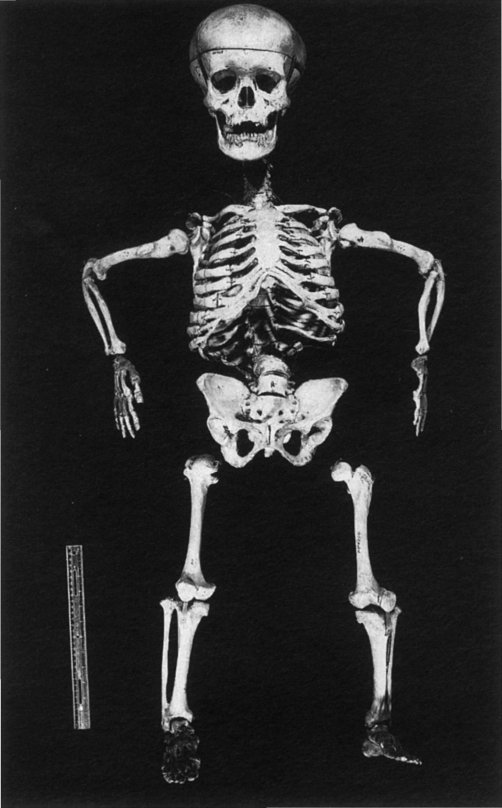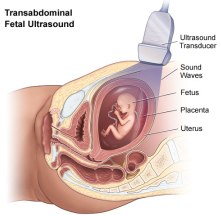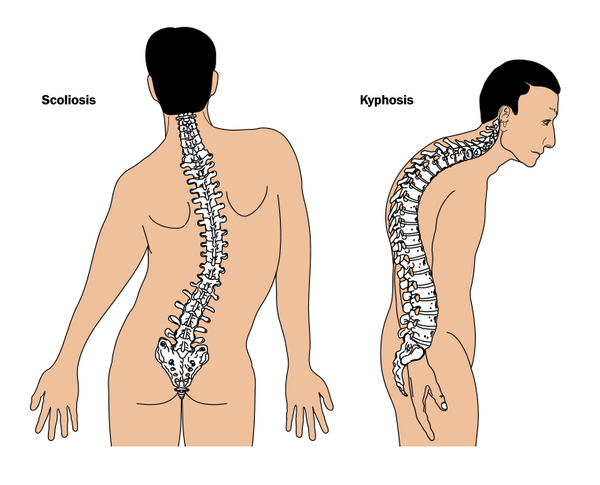“Achondroplasia .” The Cambridge Encyclopedia of Human Paleopathology, by Arthur C. Aufderheide and Conrado Rodriguez-Martin, 1st ed., Cambridge University Press, 2011. Credo Reference, https://credosource.infobase.com/articles/Qm9va0FydGljbGU6MzI4MDMw?aid=106697.
 Achondroplasia is the classic model for short-limbed dwarfism. The fundamental defect lies in depressed cartilage proliferation at the long bone growth plate. The usual cartilage columns are replaced by irregular chondrocyte masses without architectural structure. A thin, horizontal plate of fibrous tissue and bone soon separates the cartilage from the epiphysis and its blood vessels, halting further extremity growth (Cotran et al., 1994:1218). Membranous bone formation, however, is unaffected. The result is a dwarfed body with a normal-sized trunk but shortened extremities (Fig. 12.1).The head often appears disproportionately large, which is only partly an illusion due to its brachycephalic shape with frontal bossing and a shortened cranial base that leads to a depressed nasal bridge and a consistendy prominent ‘saddle nose’. Spinal lordosis is especially common and the shortened, thickened ribs contribute to a flat-appearing chest.
Achondroplasia is the classic model for short-limbed dwarfism. The fundamental defect lies in depressed cartilage proliferation at the long bone growth plate. The usual cartilage columns are replaced by irregular chondrocyte masses without architectural structure. A thin, horizontal plate of fibrous tissue and bone soon separates the cartilage from the epiphysis and its blood vessels, halting further extremity growth (Cotran et al., 1994:1218). Membranous bone formation, however, is unaffected. The result is a dwarfed body with a normal-sized trunk but shortened extremities (Fig. 12.1).The head often appears disproportionately large, which is only partly an illusion due to its brachycephalic shape with frontal bossing and a shortened cranial base that leads to a depressed nasal bridge and a consistendy prominent ‘saddle nose’. Spinal lordosis is especially common and the shortened, thickened ribs contribute to a flat-appearing chest.

